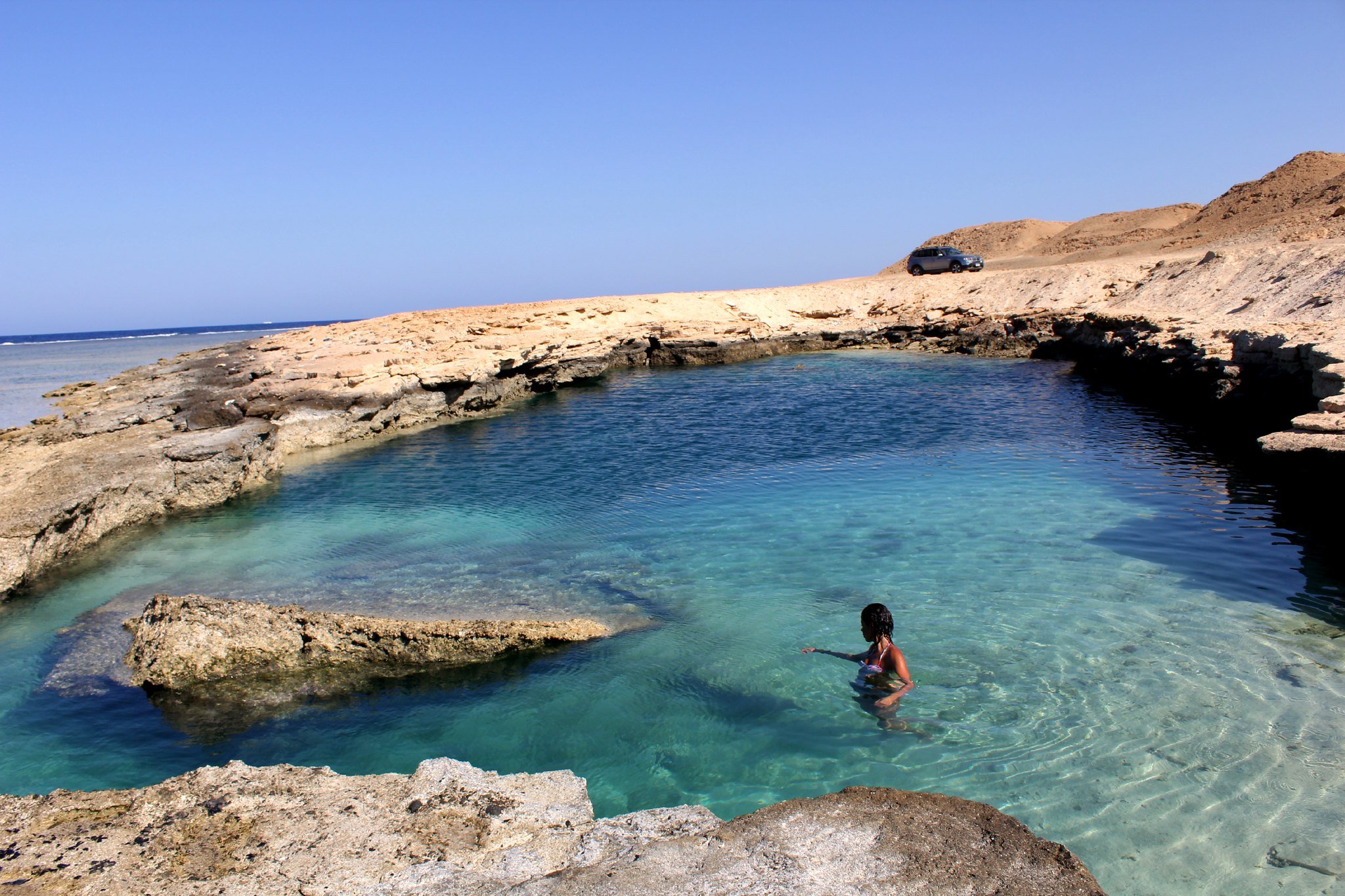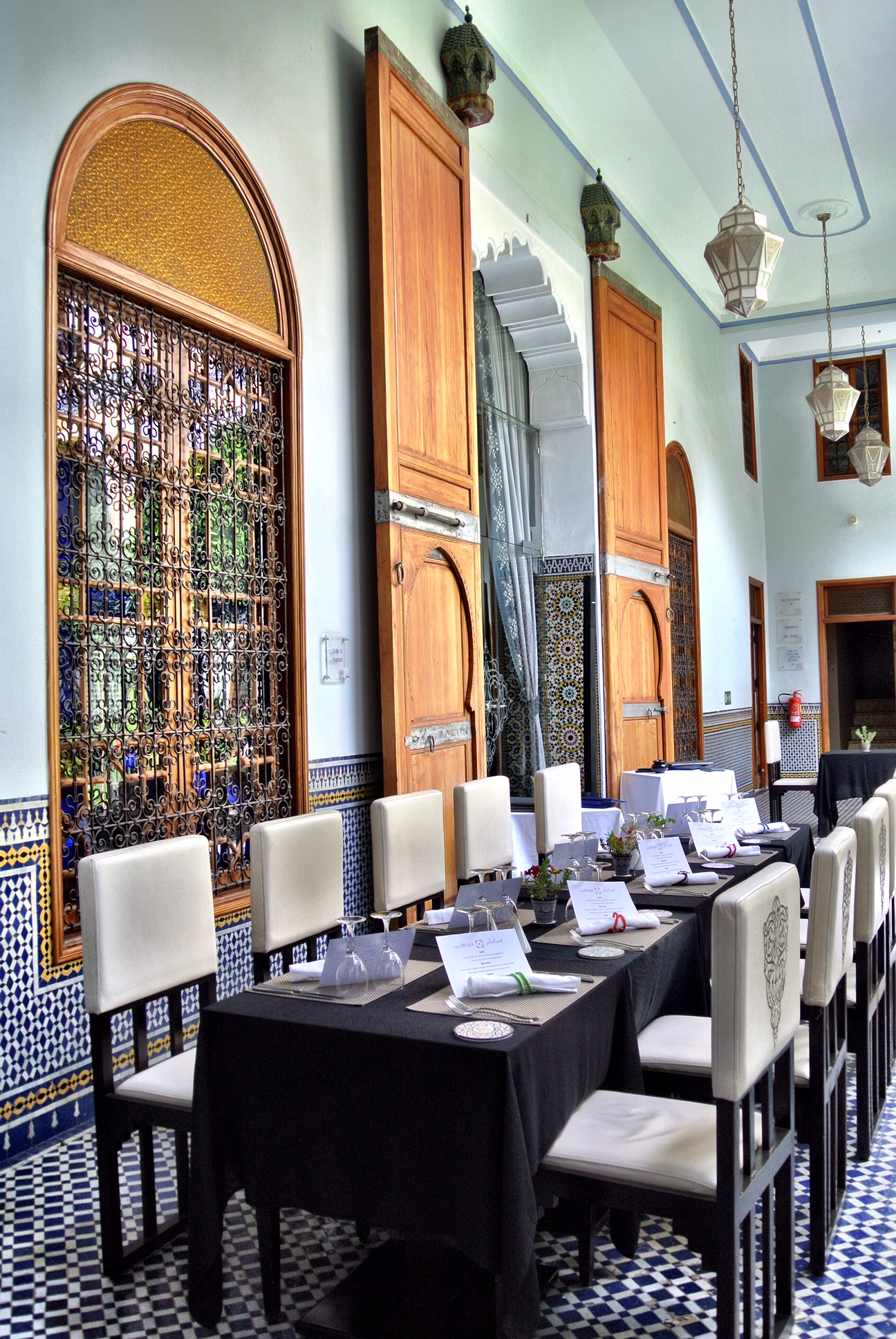The stunning interior courtyard of Riad Dar Bensouda in Fès, Morocco
A former madrasa, shops and houses combine into a luxurious, tranquil riad right in the heart of the Fès medina.
We had quite a time getting to Fès, and we didn’t arrive until the middle of the night, being led by a young boy through the maze of the medina and chased by our taxi driver.
“The main structure was formerly a 17th century madrasa, an Islamic school of religious instruction.”
Even though the circumstances weren’t ideal, we were graciously welcomed by one of Riad Dar Bensouda’s staff, Yunis.
We found ourselves ushered into a quiet, whitewashed sitting lounge with low horseshoe-shaped arches. We later learned that the room was originally a stable, which accounted for the low ceiling and stall-like design. The white walls of the old stable are a stark contrast to the cream-colored hue of the adjoining spaces.
Yunis took care of our young guide and the irate driver, then showed us to our room.
The riad became our home for four nights. And what a home it was!
Duke peeks his head out of one of the doors within a door that led into our room
Light from the courtyard spills into our room through the intricately carved door
Breakfast included jelly, butter and cheese in the adorable Fès blue pottery
From Madrasa to Guesthouse
Said (pronounced Sy-eed), the guesthouse manager, generously gave us a tour the evening before we left and explained the history of the various rooms within the riad. The main structure was formerly a 17th century madrasa, an Islamic school of religious instruction, and named after its previous owner, Imam Bensouda.
Over time, proprietor Abdul Latif acquired adjoining properties which allowed him to expand. It took a total of four years to renovate and restore.
Majestic in scale, the centerpiece of the madrasa courtyard is a star-shaped fountain, which Wally jokingly lamented was not filled with rose petals during our stay. This interior courtyard rises three stories from the original well-worn polychrome tile of the floor to the green tiles of the rooftop terrace, which opens to the sky, filling the space with natural light.
Rain only adds to the beauty of the interior courtyard and star-shaped pool
The riad contains two fountains. The inner courtyard fountain was used for ablutions and a larger, more elaborate one, was for the kitchen. Water still comes from the Fez River.
When Latif purchased the madrasa in 2009, the intricately carved cedar doors to the structure’s 11 suites had been stolen, possibly by the previous owner’s family.
David Amster, director of the Arabic Language Institute in Fez, a friend of Latif’s, was apparently tipped off to the whereabouts of the original doors, which emerged for sale in Rabat. Thankfully, they were snatched up and restored to the property. Modern replicas just wouldn’t have done it justice.
A Tour of the Riad
The extraordinary room we stayed in was located on the ground floor of this courtyard and features a 7-meter-high vaulted wood ceiling, gauzy white floor-to-ceiling curtains and a lofted bathroom accessed by stairs along the far wall. Its interior included a pair of traditional Moroccan lanterns hung on either side of the bed and a beautiful vintage ivory-colored Beni Ourain rug, from the Berber tribe of that name, with a simple diamond lattice pattern that sat in front of a daybed.
On our tour, Said led us through a doorway, into the riad’s foyer by its main entrance, and pointed out a raised tile-covered platform. This was where people once would dismount and mount horses — not far from the sitting area with the low ceiling and horseshoe-shaped arches which was originally a stable. The platform now serves as a spot for literature promoting Latif's other riads in Marrakech (eight of them). A black and white portrait of Mohammed VI, the current king of Morocco, hangs on the wall above.
The nearby office was originally a shop that opened to the street, where a man sold djellabas, traditional hooded wool cloaks.
Another structure, which Said referred to as the visitors’ house, was incorporated into the riad as well. This was where the women of the household were shut away when men came to call.
A derelict mosque faces the riad, owing its unfortunate state to being the tomb of the imam. Unlike in Christianity, with churches containing many a crypt or relic, it’s forbidden to pray in a mosque that has become a burial shrine.
As we wandered from room to room, Said chuckled, “It’s labyrinthine inside and out!”
The dining area surrounds the pool and sunbathing area, with a chevron-patterned tile we loved
A general gathering spot with plenty of seating and a small pool, the lower terrace salon was where we had breakfast every morning as well as coffee and snacks in the afternoon and a meal in the evening. The breakfast presentation of tiny blue and white tangine-shaped covered dishes inspired us to purchase a set of Fès blue pottery to use at home.
Birds fly by as Wally looks up from his chaise longue by the pool
This area was once a ruined house and shops facing the street. The tranquil space includes low-slung banquettes and a library of design books, some featuring Latif's other riads. The sound of trickling water provides a sense of serenity.
Most recently, the owner bought yet another house, in May ’15. These two rooms just past the kitchen have their own private terrace.
“Is he done adding on?” Wally asked.
“Who knows?” Said said, with a laugh.
A restrained unifying palette of of buff-colored tadlelakt, a plaster that is hand-polished with stones, runs throughout the ground floor and is complemented by hues of pine, slate blue, pewter, carmine and dusty pink.
Part of the multi-tier rooftop terrace
And one of the best parts of the raid is the expansive rooftop terrace, which has multiple levels, due to the variety of previous houses that have been incorporated. It offers spectacular views of the Fès medina as well as additional areas to eat and lounge.
If you’re staying in Fès, we highly recommend staying at the Riad Dar Bensouda. It’s absolutely breathtaking, the food is delicious, and the staff is as friendly as can be. –Duke































